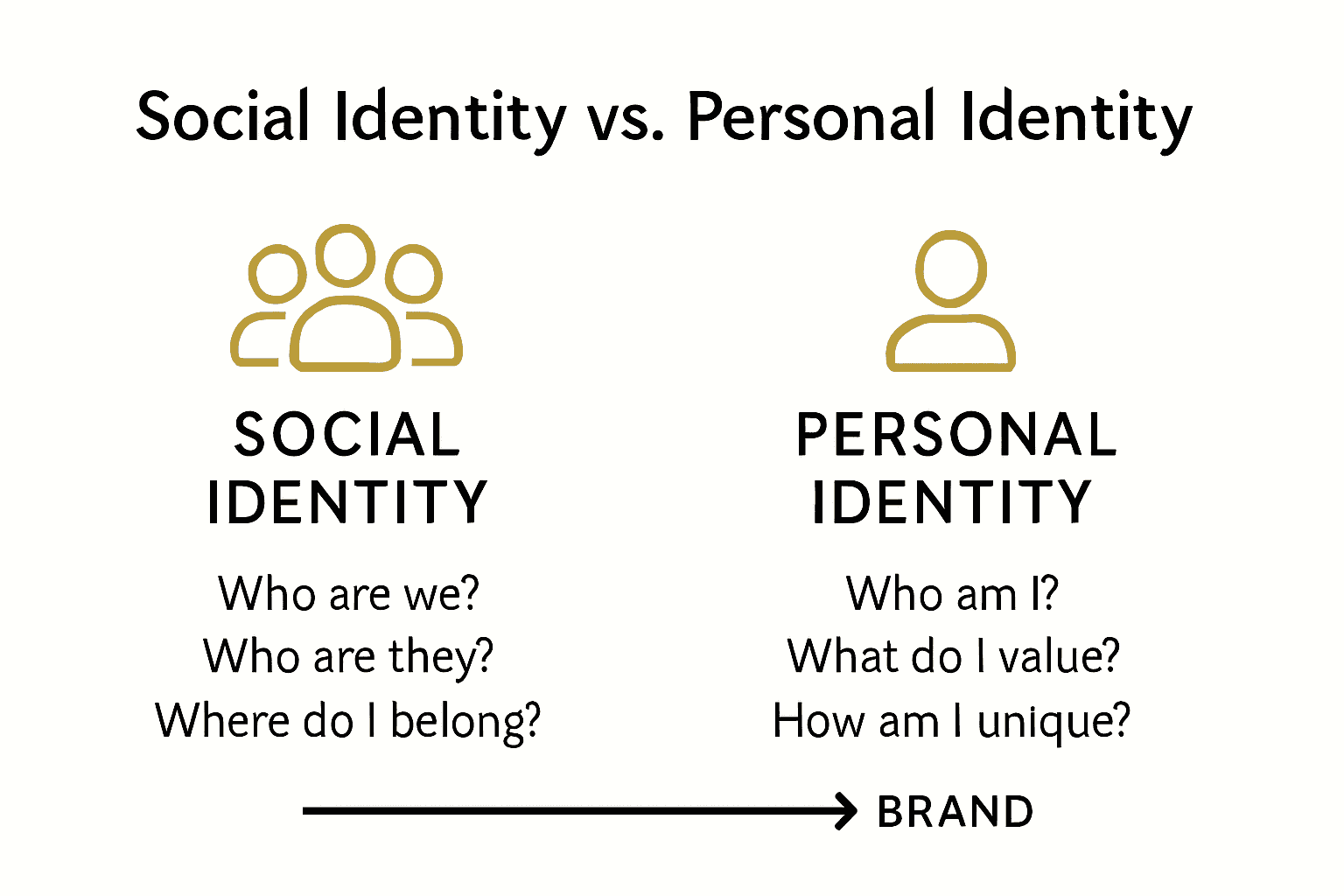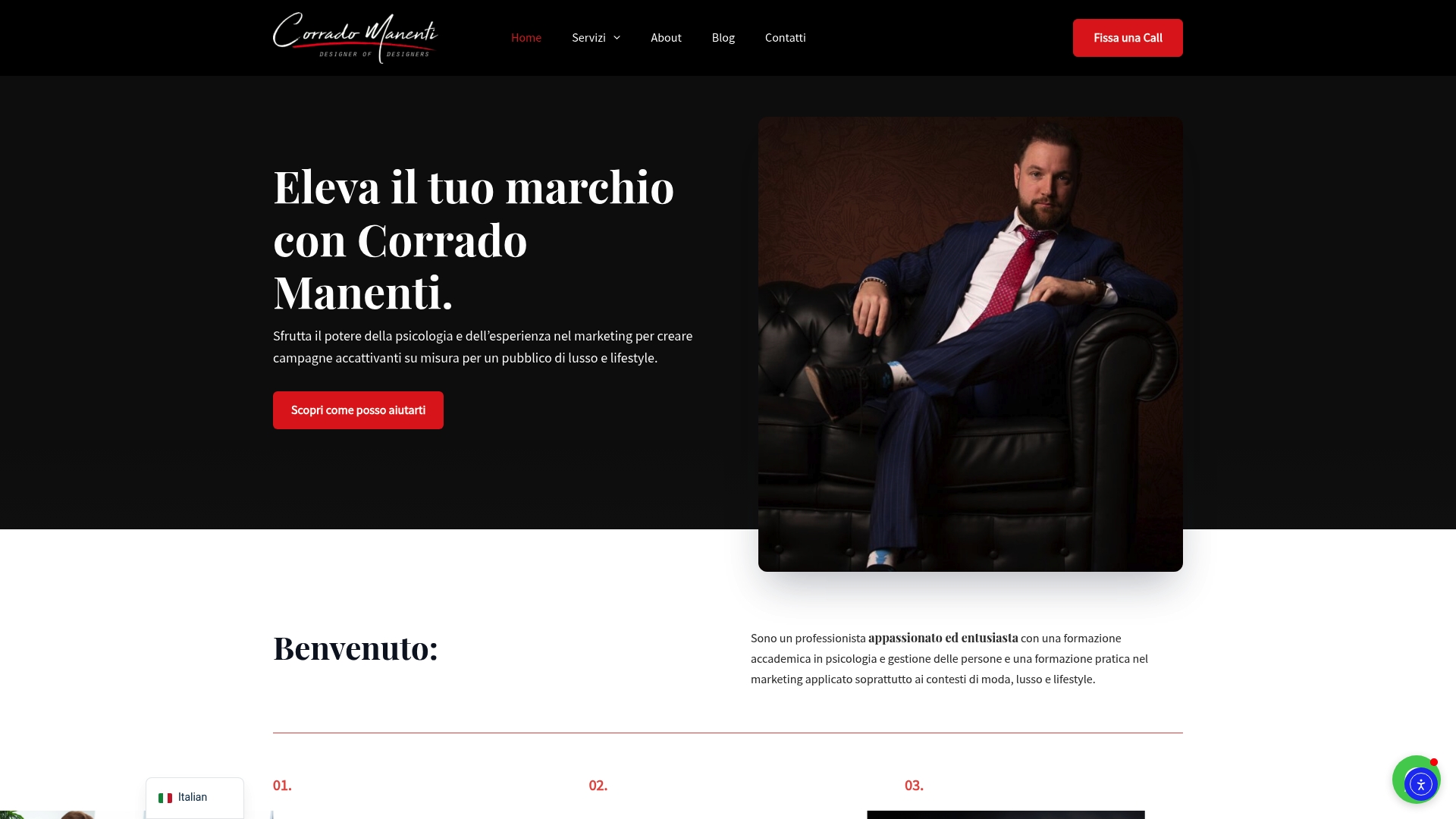Only about 45 percent of luxury brands succeed in creating lasting emotional bonds with customers. Crafting a premium brand that people truly love goes deeper than clever visuals and catchy slogans. The key lies in building a strong psychological foundation that shapes every experience and sets your brand apart. Discover how understanding these vital underpinnings allows you to create a magnetic identity that attracts loyal fans and fuels growth.
Quick Summary
| Key Point | Explanation |
|---|---|
| 1. Define brand’s psychological foundation | Understanding emotional drivers strengthens brand identity and fosters meaningful consumer connections. |
| 2. Craft a unique visual and verbal language | A distinctive brand language enhances recognition and embodies brand personality across all platforms. |
| 3. Create immersive sensory touchpoints | Engaging all five senses enriches customer experience and strengthens emotional connections with the brand. |
| 4. Integrate innovative digital strategies | Adapting to technological advancements creates authentic digital experiences that resonate with consumers. |
| 5. Ensure consistency across all interactions | Consistent branding builds trust and enhances customer satisfaction through a unified narrative. |
Table of Contents
- Step 1: Define Your Brand’s Psychological Foundation
- Step 2: Craft A Distinctive Visual And Verbal Brand Language
- Step 3: Curate Sensory And Experiential Touchpoints
- Step 4: Integrate Innovation And Digital Strategies
- Step 5: Verify Consistency Across Every Customer Interaction
Step 1: Define your brand’s psychological foundation
Defining your brand’s psychological foundation is about uncovering the deep emotional and social drivers that will make your premium brand resonate authentically with your target audience. This step transforms your brand from a mere visual identity into a powerful psychological experience.
According to research published in the academic book “Brand Psychology,” psychological principles serve as critical foundational layers for building memorable brand identities. Your goal is to map out precisely how your brand will connect with consumers on intellectual and emotional levels.
Start by understanding two key psychological dimensions of brand identity. Read more about brand psychology insights that reveal how brands create meaningful connections. A 2022 academic study highlights that luxury brand identity emerges through two crucial psychological frameworks social identity and personal identity.
Social identity represents how consumers perceive your brand’s status and external recognition. This means exploring questions like: What social signals will your brand communicate? How will customers feel when associating with your brand?
Personal identity focuses on functional and emotional values the intrinsic qualities that speak directly to individual consumer needs. Here you want to articulate your brand’s unique emotional promise. What specific feelings or experiences will your brand consistently deliver?
Here’s a summary comparing the two key psychological dimensions of brand identity:

| Dimension | Focus | Key Questions |
|---|---|---|
| Social Identity | External recognition Status signals |
What social signals will your brand communicate? How will customers feel associating with your brand? |
| Personal Identity | Functional & emotional values | What unique promise do you deliver? What specific feelings or experiences will you provide? |
Pro Tip: Don’t just list abstract qualities. Create a vivid psychological profile of your ideal customer and design your brand identity to speak precisely to their deepest motivations.
Careful psychological positioning transforms your brand from a generic offering into a magnetic identity that customers will passionately embrace. By understanding these nuanced psychological dimensions you create a foundation that goes far beyond surface level aesthetics.
In the next step we will translate these psychological insights into tangible visual and communication strategies that bring your brand’s unique psychological DNA to life.
Step 2: Craft a distinctive visual and verbal brand language
Crafting a distinctive visual and verbal brand language transforms your premium brand from an ordinary concept into a memorable sensory experience. This crucial step defines how your brand will visually and verbally communicate its unique personality across every touchpoint.
Learn more about developing a luxury brand voice by understanding that your brand language is more than aesthetic choices. According to a 2024 literature review, visual brand identity dramatically affects consumer perceptions. The research reveals that visual traits like maturity, excitement, trustworthiness, and sincerity significantly influence brand attitude and loyalty.
Visual brand language encompasses design elements that subliminally communicate your brand’s core values. This means carefully selecting shape, color, materials, typography, and composition to create an immediate and lasting impression.
Start by defining your brand’s personality traits. Are you sophisticated and understated? Bold and provocative? Elegant and timeless? Each trait translates into specific visual and verbal design choices. A mature luxury brand might choose muted color palettes and refined typography.
 An exciting brand could leverage dynamic shapes and vibrant color contrasts.
An exciting brand could leverage dynamic shapes and vibrant color contrasts.
Consider how perceptual fluency plays a critical role. This means designing visual elements that are intuitively easy for consumers to process. Your goal is creating a visual language so smooth and coherent that customers instantly recognize and connect with your brand.
Pro Tip: Develop a comprehensive brand style guide that meticulously documents your visual and verbal guidelines. This ensures consistency across all communication channels.
Your verbal language should mirror your visual identity. If your visual design is minimalist, your copywriting should be crisp and precise. If your visual approach is ornate, your language might become more descriptive and emotive.
In the next step, we will explore how to translate these visual and verbal foundations into a comprehensive brand experience that resonates deeply with your target audience.
Step 3: Curate sensory and experiential touchpoints
Curating sensory and experiential touchpoints transforms your premium brand from a simple offering into an immersive journey that captivates customers through multiple sensory dimensions. This step is about creating a holistic brand experience that resonates emotionally and intellectually.
Explore innovative instore experience design strategies that go beyond traditional marketing approaches. A 2023 peer-reviewed study demonstrates that sensory brand experiences significantly impact customer satisfaction and brand loyalty through emotional and cognitive pathways.
Sensory branding moves far beyond visual aesthetics. It involves strategically engaging all five senses: sight, sound, touch, taste, and smell. Each sensory interaction becomes an opportunity to create a memorable brand narrative that connects deeply with your audience.
Consider how each touchpoint can communicate your brand’s unique personality. Visual experiences might involve carefully curated color palettes and design elements. Auditory experiences could include signature soundscapes or carefully selected background music. Tactile experiences might focus on packaging textures or product materials that communicate quality and sophistication.
The goal is creating a seamless sensory ecosystem where every interaction reinforces your brand’s core identity. A luxury watch brand might offer leather-bound packaging with a subtle leather scent. A high-end hospitality brand could design ambient soundscapes that evoke tranquility and exclusivity.
Pro Tip: Map out every potential customer interaction and analyze how each touchpoint can deliver a consistent sensory experience that reflects your brand’s psychological foundation.
Remember that sensory branding is not about overwhelming customers but creating subtle yet powerful emotional connections. Each sensory element should feel intentional deliberate and aligned with your brand’s core narrative.
In the next step we will explore how to translate these sensory strategies into a comprehensive brand experience that creates lasting emotional resonance with your target audience.
Step 4: Integrate innovation and digital strategies
Integrating innovation and digital strategies transforms your premium brand from a traditional business model into a dynamic ecosystem that adapts and evolves with technological advancements. This step is about creating a digital presence that feels both cutting edge and authentically aligned with your brand’s core identity.
Explore the latest approaches to digital brand positioning by understanding how digital technologies are reshaping brand experiences. Neurobranding an emerging academic field demonstrates how sophisticated technologies like fMRI and eye tracking can help brands form deeper emotional connections with consumers.
The concept of organizational digital identity goes beyond simple online presence. It involves creating a shared digital self concept that resonates with your target audience. This means developing digital strategies that are not just technologically advanced but psychologically compelling.
Start by mapping your digital touchpoints. How do customers experience your brand online? Consider platforms like social media websites mobile apps and digital marketing channels. Each digital interaction should feel like a seamless extension of your brand’s psychological foundation established in earlier steps.
Leverage emerging technologies strategically. Augmented reality experiences can offer immersive brand interactions. Personalized AI driven recommendations can create more intimate customer experiences. Interactive digital platforms can transform passive consumption into active engagement.
Pro Tip: Regularly audit your digital strategies. Technology evolves rapidly and what feels innovative today might feel outdated tomorrow.
Remember that digital innovation is not about chasing trends but about creating meaningful connections. Your digital strategy should amplify your brand’s unique personality making every digital interaction feel intentional and authentic.
In the next step we will explore how to measure and refine these innovative strategies to ensure continuous brand evolution and relevance.
Step 5: Verify consistency across every customer interaction
Verifying consistency across every customer interaction transforms your premium brand from a fragmented experience into a unified narrative that builds trust and reinforces your brand’s core identity. This step ensures that every touchpoint communicates the same compelling story.
Learn about innovative approaches to maintaining brand consistency and understand why this matters deeply. McKinsey research reveals that consistency across customer journeys is 30% more predictive of customer satisfaction and can boost revenue by up to 15%.
Consistency is not about rigid uniformity but about creating a seamless brand experience that feels intentional and authentic. This means aligning visual design verbal communication sensory experiences and digital interactions so they tell a coherent story about who you are.
Start by conducting a comprehensive brand audit. Map out every potential customer interaction from digital platforms to physical spaces. Examine each touchpoint for alignment with your established brand personality psychological foundation and visual language. Look for subtle inconsistencies that might dilute your brand message.
A 2025 professional insights article highlights that consistent branding across touchpoints can drive up to 23% more revenue. This means your website should feel like a natural extension of your in store experience. Your social media communication should mirror the tone used in product packaging. Your customer service interactions should reflect the same emotional resonance as your marketing materials.
Pro Tip: Create a detailed brand guideline document that serves as a living reference for every team member. Update it regularly to maintain relevance and adaptability.
Remember that consistency builds trust. Customers want to feel that they know exactly what to expect from your brand regardless of where or how they interact with you.
In the final step we will explore how to continuously evolve and refine your brand strategy to stay innovative and relevant.
Elevate Your Premium Brand Identity with Proven Expertise
Building a premium brand identity starts with deep psychological insight, but executing each step without expert support can be overwhelming. Many companies struggle to connect their visual language, sensory experiences, and digital strategies, risking inconsistency and missed emotional engagement. If you want to master every element—from psychological foundations to innovative digital touchpoints—discover how targeted consulting can bridge the gap between insight and real-world execution. Unlock tailored solutions for Marketing Fashion and ensure that your premium identity is never left to chance.

Achieve consistency and emotional impact at every interaction. Explore the psychology-driven methods and luxury marketing expertise of Corrado Manenti, trusted by leading brands for proven results. Visit the main site to see how you can take the next step, or find more about Personal Branding for a fully personalized approach. Now is the time to evolve your premium brand identity with strategies designed for lasting relevance and market leadership.
Frequently Asked Questions
How do I define my brand’s psychological foundation?
Start by identifying the social and personal identity dimensions of your brand. Create a psychological profile of your ideal customer, focusing on emotional and functional values, within 30 days.
What are the key elements of a distinctive visual brand language?
The essential elements include color, typography, shapes, and overall design harmony. Develop a visual style guide that documents these choices to ensure consistency across all communication channels.
How can I curate sensory touchpoints for my premium brand?
Engage all five senses—sight, sound, touch, taste, and smell—through your branding efforts. Design experiences that reflect your brand’s identity, and map out every interaction to deliver a cohesive sensory narrative.
What is the role of digital strategies in creating a premium brand identity?
Digital strategies should enhance emotional connections and extend your brand’s personality online. Regularly review your digital touchpoints, ensuring they align with your core identity, ideally every 1-2 months.
How can I ensure consistency across all customer interactions?
Conduct a comprehensive brand audit to examine each customer touchpoint for alignment with your established brand narrative. Implement a detailed brand guideline document to maintain consistency, updating it regularly as needed.
What steps should I take to refine my brand strategy over time?
Continuously evaluate customer feedback and market trends to adapt your brand strategy. Set a schedule to review and adjust your branding approach every 6-12 months to ensure ongoing relevance.



